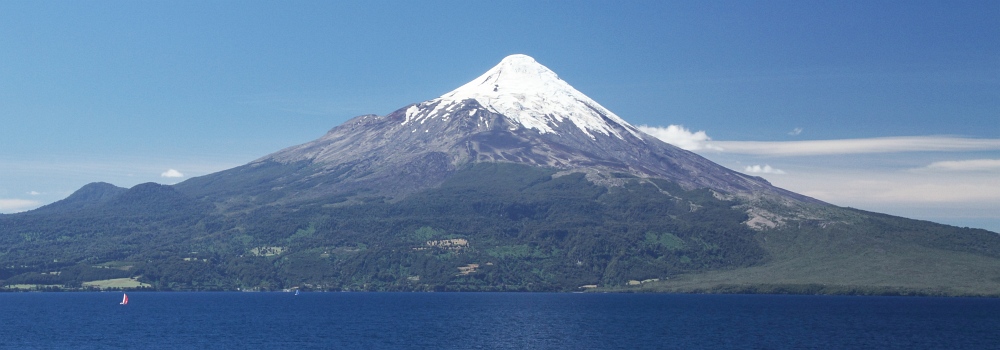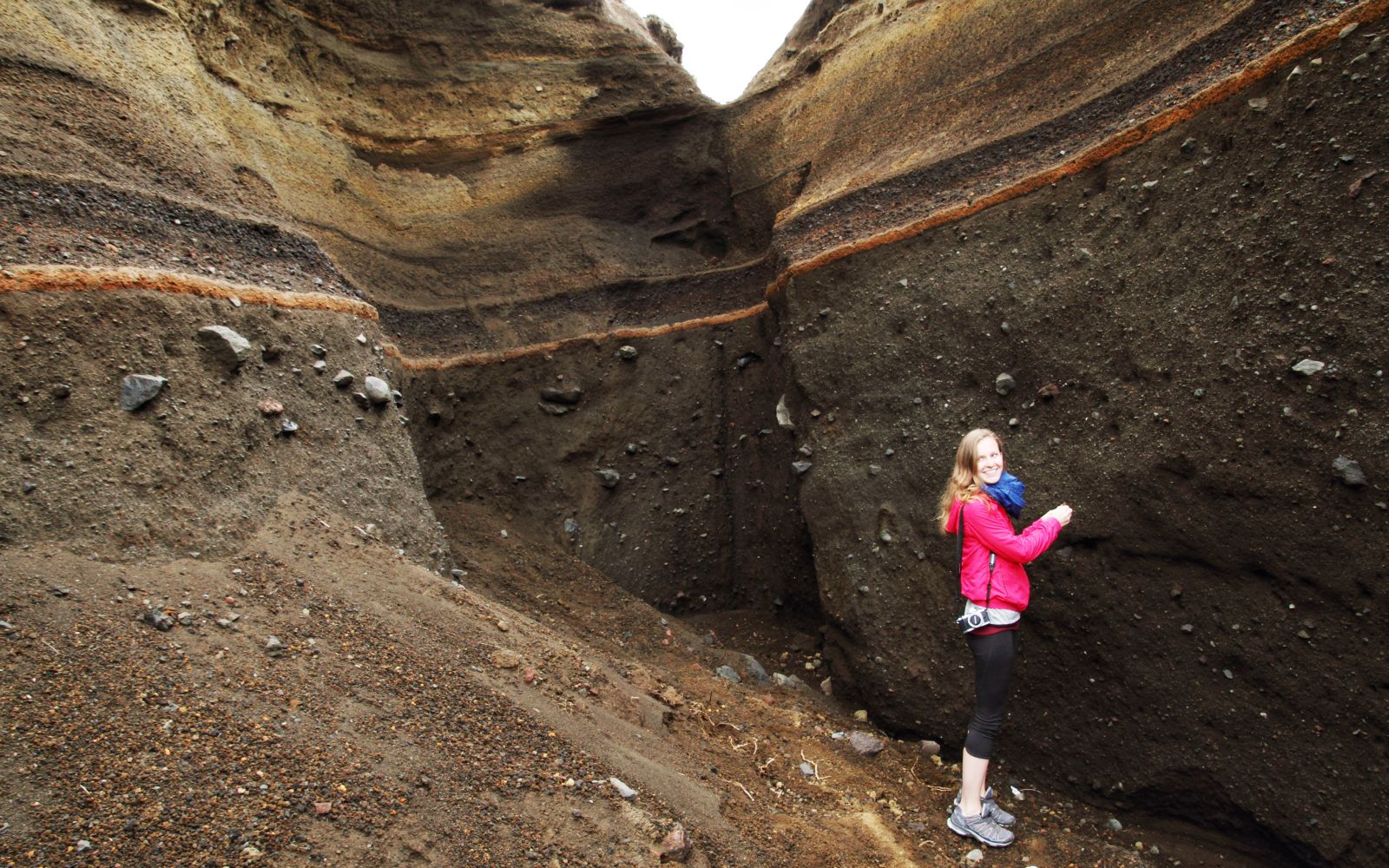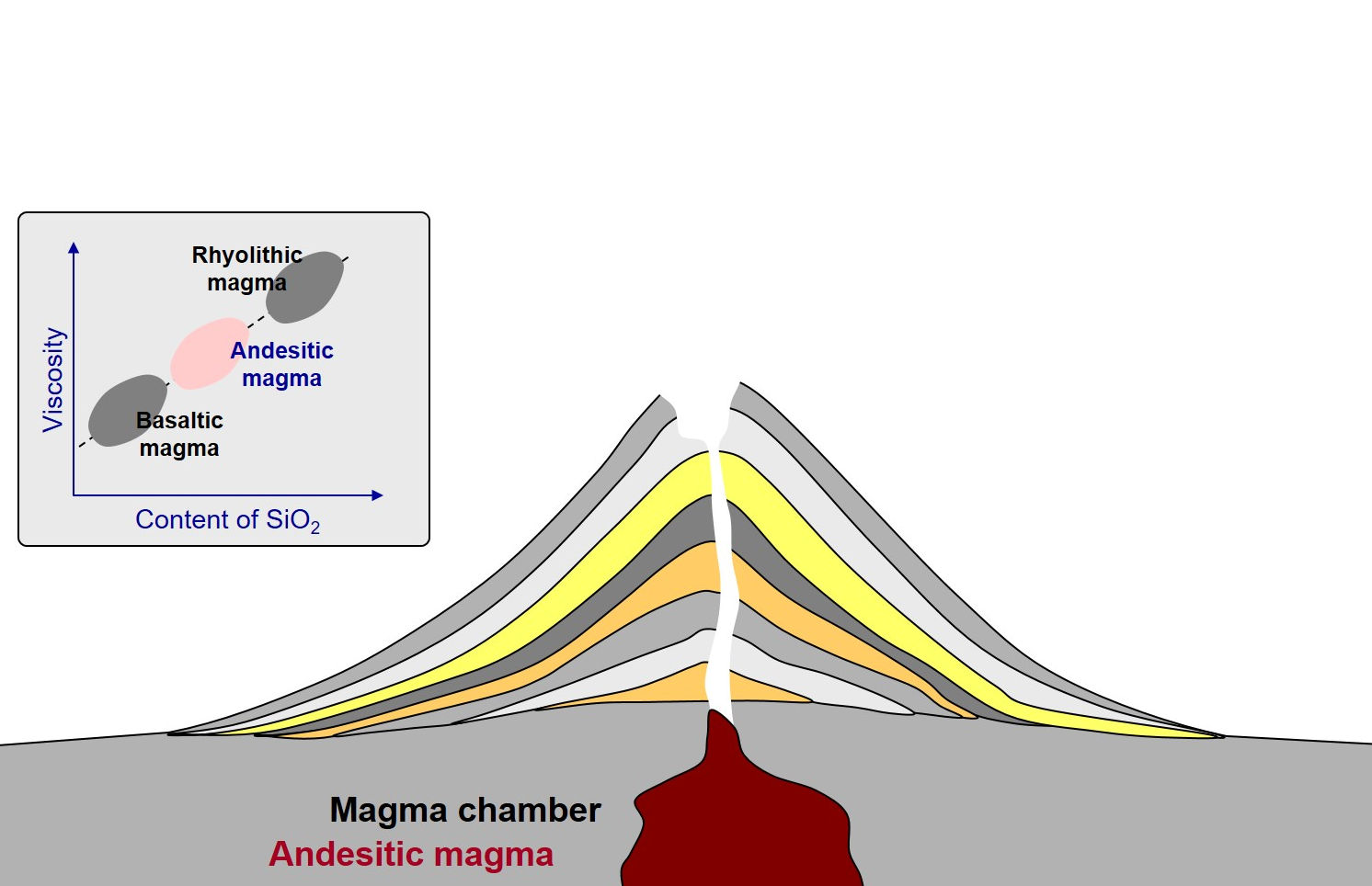

When an oceanic plate of the Earth's crust steeply dives beneath another - oceanic or continental - plate, melting of some parts of the upper mantle is often one of the consequences. The resulting magma rises and, when reaching the Earth surface, appears as lava or pyroclastic material in a more or less explosive way. The molten rock is often quite viscous. But sometimes it is fluid enough to form lava flows. Different types of volcanic materials can form slopes within a broad range of inclination angles. This is the principle of the formation of stratovolcanoes. Through the subduction of the Nazca Plate beneath the South American Plate along almost the entire range of the Andes, stratovolcanoes are very common here. Many of them are extinct or dormant whereas others erupt from time to time, challenging the society to cope with the consequences in the most appropriate way.
Click into the title image to visit a number of stratovolcanoes in the Andes. Do you know some of of them? But be careful: two of the photos are not from the Andes, and one even does not show a stratovolcano. Track down the cuckoo's eggs!














